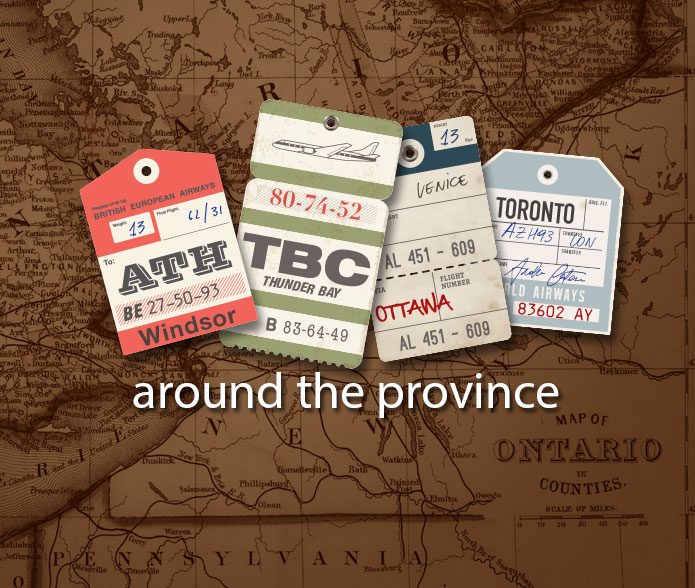Learn about the benefits of constructing a multi-year internship from a MLIS student's perspective.

Co-authoring colleagues: how librarians can successfully reach out to faculty to collaborate on research
In 2018, Borrego, Ardanuy and Urbano wrote a paper that outlined four avenues for academic librarian research: articles on topics related to LIS published in non-LIS journals; higher education and information literacy; systematic reviews and meta-analysis; and research collaboration in the faculty’s areas of expertise. While this paper articulated that the latter is becoming increasingly common practice, it did not offer practical approaches for librarians who are interested in partaking in this level of research with faculty members. The focus of this article is to provide tangible examples of how a librarian can begin these conversations with faculty members.
Networking with Faculty
Librarians in a liaison type role connect with their faculty on a variety of levels. As you build relationships with faculty members, you will become aware of what their own research areas and current projects are. This is an excellent opportunity to offer assistance.
When offering assistance, it is important to distinguish between routine research help and what goes above and beyond, which could warrant asking for co-author or co-investigator status on their project. The closer the relationship you have with the faculty member, the easier it becomes to have these conversations. Some approaches to this conversation include mentioning your prior publications; that librarians have expectations to do research and publish; and that you’re looking to expand your own knowledge and expertise and would love the chance to work more closely with your faculty colleagues.
It is easier to get involved if the project is new or just beginning. This allows you to help shape the scope of the project and identify precisely where you can assist. It also makes division of labour easier as it is established at the beginning and expectations are clearly laid out. There are, however, opportunities to join an ongoing project, especially if it has been stalled for any number of reasons. I have had experience in both scenarios so I can offer some real-world examples.
The latter occurred after having a casual chat about my love of graphic novels with a faculty member who told me one of her colleagues had been working on a project analyzing mental health in comics and suggesting I should have a chat with them. After that initial connection, I made some suggestions to broaden and strengthen the research sample and recommended technology that might assist with text analysis (OCR). This was so well received that I became co-investigator on the project. This type of serendipitous encounter doesn’t always end with a research collaboration, but at the bare minimum it shows faculty that you are interested in the work they do and it may lead to collaboration in the future.
Another scenario could be a casual conversation where you bring up an interesting research study that relates to a faculty colleague’s area of expertise. I send articles and book titles to my faculty regularly as part of my outreach strategy. Once, I shared an in-class simulation exercise with a faculty member who had never done that type of activity before. He was so interested that he asked for my help to develop a pilot. We worked on it together and it was largely successful, which led to a multi-year study that we ended up publishing. He has said multiple times that he never would have done something like this had I not brought it up out of interest to him.
Marketing Librarian Skills
When thinking of skills you can bring to a research project consider your own research. Have you done any objective assessment of your teaching and its effectiveness? The Scholarship of Teaching and Learning is a growing field consisting of both faculty and librarians who think critically about pedagogy and assessment. This may be an opportunity to approach faculty if their research relates to your own teaching pedagogy. Do you have experience with Research Data Management or Open Access? Leverage your knowledge as these may be areas that your faculty colleagues are not as familiar with but may have an interest in utilizing.
Librarians are also great at helping with literature reviews. We are seeing an increased need for faculty outside of science to do systematic reviews. Librarians have an advantage in this area given our expertise with keyword creation, building effective search strings, identifying potential databases and journals, conducting these searches, and organizing the results in literature review tables. This is something many of us have already been assisting with either directly or through training Research Assistants, and we can demonstrate our mastery in these areas through advocating for a co-author or co-investigator status.
Final Thoughts
While this isn’t an all-encompassing approach to research collaborations with faculty, it is the beginning of a conversation. The key take-aways are to connect with faculty members and build a solid rapport. Once you have a connection, you can make suggestions regarding their own research and interests, which may turn into something, or it may not. At the very least it will strengthen your connections with faculty colleagues, and this is never a bad thing.
Reference
Borrego, Ángel, Jordi Ardanuy, and Cristóbal Urbano. “Librarians as Research Partners: Their Contribution to the Scholarly Endeavour Beyond Library and Information Science.” The Journal of Academic Librarianship 44, no. 5 (September 1, 2018): 663–70. doi:10.1016/j.acalib.2018.07.012.
—
Michelle Goodridge is a liaison librarian at Wilfred Laurier University, and can be found on twitter @migoodridge.
Photo Credit
1. Photo by Scott Graham on Unsplash.

